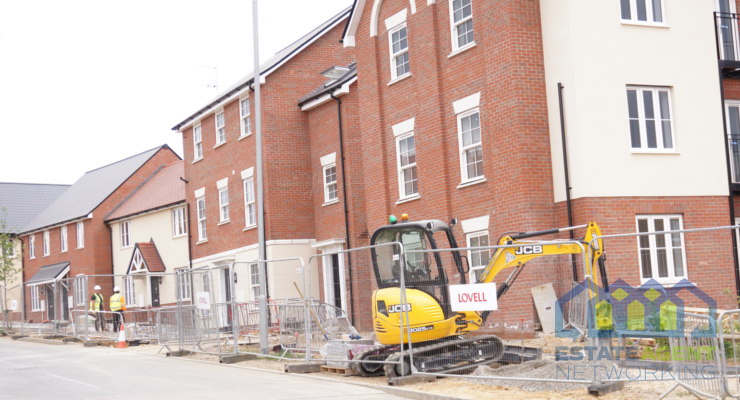Breaking Property News 16/09/24
Daily bite-sized proptech and property news in partnership with Proptech-X.
What are commercial building tenants really looking for in modern workspaces?
With remote and hybrid working models becoming the norm, many businesses are beginning to downsize their office spaces. Indeed, compact, higher-quality environments are now preferred over the vast, traditional settings of the past, with the expiration of current leases leading to a 40% increase in space reduction, according to workplace research firm, Leesman.
In this rapidly evolving setting – where London vacancy rates have almost doubled according to real-estate experts, JLL – the quality of office amenities has become paramount to filling up spaces. Rather than looking for high square footage, businesses nowadays are looking at factors such as high-speed internet connection to guide decisions on where they should move their activity hubs, though it’s often difficult to guarantee this. Even those with existing fibre broadband can be thwarted by excessive demand, especially in buildings with multiple tenants, leaving leaders at a loss.
Fortunately, there are ways to overcome these challenges. We spoke to Chaim Grunfeld – Co-founder of telecoms company, Prime Connect, to find out what struggling businesses can do. We asked him a series of questions –
What are the main challenges that businesses face when trying to access high-speed broadband?
“Surprisingly, access to fibre is still not available via mainstream providers in many key business locations – especially in city centres, which means the only option is to install a dedicated fibre line within your premises. This is not always possible for those working from rented buildings or co-working spaces, where this kind of infrastructure is often beyond the tenant’s control.”
Isn’t this an issue in light of the upcoming PSTN switch-off? Do older buildings in particular pose high-speed broadband limitations?
“Yes, naturally. When the PSTN becomes inactive in 2027, which is not far off now, the copper connections that older buildings still rely on will become obsolete. For now, those in older buildings can still use copper, but this limits the options for incoming tenants to get connected to fibre quickly. Though landlords of any older office buildings will be under pressure to update their contracts and connect to fibre before the deadline, so things might change.”
Am I right in thinking, however, that fibre isn’t quite the full picture? There are other factors like bandwidth allocation that can affect high-speed internet connection, particularly in buildings with multiple tenants.
“With shared offices becoming the norm, many landlords will be installing a fibre connection and sharing it between all their tenants, for those tenants to use as they wish. This causes two main problems. First, there’s a potential security risk, if tenants aren’t segregated and are thus able to jump onto one another’s networks. Then, there’s the risk of one tenant using all the available bandwidth for things like video uploads and large file transfers, leaving other businesses without connection. The only way around this is to choose a reliable internet service company that allocates bandwidth to each location, whilst also securing the network, to prevent these problems.”
So, where do building managers come into all of this? Is there anything they can do to secure better broadband for their tenants?
“First thing’s first, building managers need to be pre-connecting their buildings with fibre, prior to the first businesses coming in. Each suite must be ready to connect and go, safe in the knowledge that high-speed connections are supported by a reliable telecoms provider who will be there to resolve any problems. This means tenants can move straight in after signing the lease, with zero delays caused by fibre installations and wayleave processes, which can also prove costly.”
What about those who aren’t renting? Is there anything businesses can do when working with property developers to ensure new buildings will meet their broadband needs?
“Engaging with your chosen connectivity provider early on is really important. This allows them to install a fibre backbone into the building from the very start, ensuring there’s capability for connection in each location where high-speed internet might be required.”
Are there any other specific solutions or technologies that can help to overcome high-speed access challenges?
“Once again, the key is to pre-connect a building with fibre before marketing the property. The ability to connect the moment a business enters a building is incredibly important in the digital age, so landlords need to make sure all of their rooms are fitted with high-speed internet capabilities before people even think about signing the lease.”
What other measures can businesses take to advocate for better broadband solutions in their buildings?
“Leaders must check whether the landlord has pre-connected the building with fibre. Then, it’s a question of ensuring there’s enough bandwidth capacity and internet speed available for the company to take advantage of that connectivity. This is something your chosen internet service provider should be able to help with.”
Finally, how do you envision the future of broadband in office spaces? What steps must be taken to ensure all companies have access to the digital infrastructure they need to thrive in a return-to-office world?
“All new offices – or offices that are being stripped and redone – will need fibre. Landlords have to make sure they’re supplying this in each suite of their buildings if they want to fill spaces up, recognising that the internet – now considered the world’s fourth basic utility – is key to success. So, with a good provider and a landlord that’s willing to install high-quality fibre under the right security measures, it’s perfectly possible to return to the office – even when spaces are shared – without worrying about internet disruption.”
Andrew Stanton Executive Editor – moving property and proptech forward. PropTech-X









